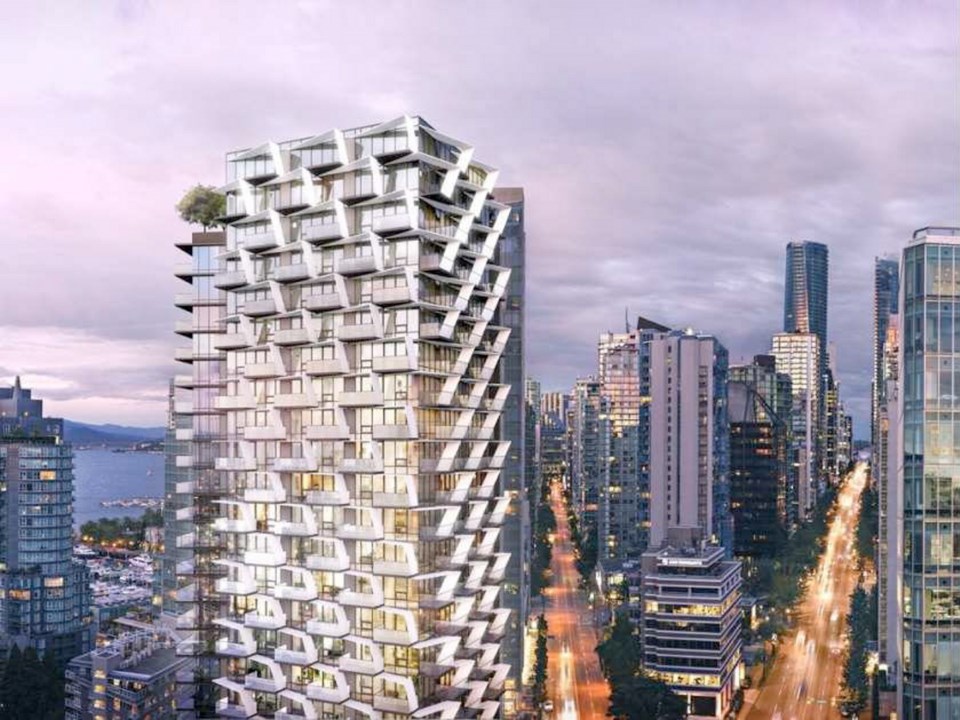Vancouver’s real-estate transfer tax for foreign buyers doesn’t appear to have slowed the market for high-end, high-rise properties.
In May, the Holborn Group said it had hit a new high price for a project in Canada when it sold all 214 luxury condos at its Trump International Hotel and Tower Vancouver at an average of $1,615 per square foot — but now Bosa Properties has claimed the record, with more than 100 of the 116 units at its Cardero development in Coal Harbour pre-selling in the $1,750-per-square-foot range.
It comes just weeks after the B.C. government brought in a new 15-per-cent property transfer tax for non-Canadian buyers of residential real estate in Metro Vancouver in a bid to dampen the hot market.
There appeared to be little concern over the tax at the first pre-sale of new condo units since the levy was introduced. Bosa began marketing its luxury Cardero project, which is slated for completion in late 2019, on Aug. 20.
The launch coincided with heated debate about what the immediate and long-term impact of the foreign buyer tax might be on blistering home prices. There have been some initial signs of a significant slow down in the percentage of sales in some Metro areas compared to last year, along with examples of price cutting.
And yet, less than two weeks after the Cardero launch, Bosa had pre-sold all of its one-bedroom (443 sq. ft., $600,000-$700,000) one-bedroom plus den (682 sq. ft., $730,000-$840,000) and 718 sq. ft. two-bedroom units. Just the larger two-bedroom and three-bedroom units remain, measuring between 1,389 sq. ft. and 1,545 sq. ft. in size, with starting prices for the largest of these hitting $2.9 million, or $1,880 per square foot.
“We’re incredibly pleased with the response thus far to our offering, and please to welcome well over 100 new homeowners to the Bosa Properties family,” said Daryl Simpson, vice-president of marketing at Bosa Properties in an email.
There have only been a few new condo launches this year in the downtown core and outside of it, “there are a handful of units available on Cambie and at UBC, but if you look at the number of units in East Vancouver, there are also just a few left and they are the sub-penthouse ones in the $1.2-million range,” said Jon Bennest, co-owner of Urban Analytics, which analyzes real estate data and compiled the report information for the Urban Development Institute.
The affordability of new concrete condominiums in the City of Vancouver has fallen noticeably in the last few quarters, according to UDI, which represents developers and this week released its second quarter report.
By comparison, the UDI’s affordability index for new concrete condos in the suburban areas is more stable.
Bennest said at one recent pre-sale of a development on Main Street, there were some “500 to 600 real purchasers” for about 100 units. Developers understand that some “400 buyers might not be as keen” on buying if they moved the price higher.
“People with more equity are (the ones) getting to buy when there is not as much choice,” he said.
The development industry is generally known for believing the antidote to high prices is adding more supply. But increasing density in the West End and downtown won’t bring down prices, Bennest said — particularly bearing in mind the designs for some proposed high-rises in the area.
This week, Bosa Properties and Kingswood Properties filed an official rezoning application for another luxury condo building across from Cardero. They are planning a 43-storey tower with 217 condo units in a design that involves several sets of cantilevered floors and looks like a giant stack of Jenga blocks. Bosa paid $120.5 million for the land in 2014, according to vancouvermarket.com.
“I don’t feel adding towers in the West End will increase affordability,” said Bennest. The land prices being paid by developers are one thing. There are also “the design guidelines,” he said.
“When you go to 50 storeys, the construction costs are much higher. Developers and the City of Vancouver want buildings they can be proud of aesthetically and in an architectural way.”
Bennest cited the twisting shape of Westbank’s Vancouver House as an example. “Every single floor plate is different because they (need to) sit 3/4 of an inch (off from the floorplate below)” in order to achieve the building’s shape.”
“It’s going to be very expensive,” he said.



